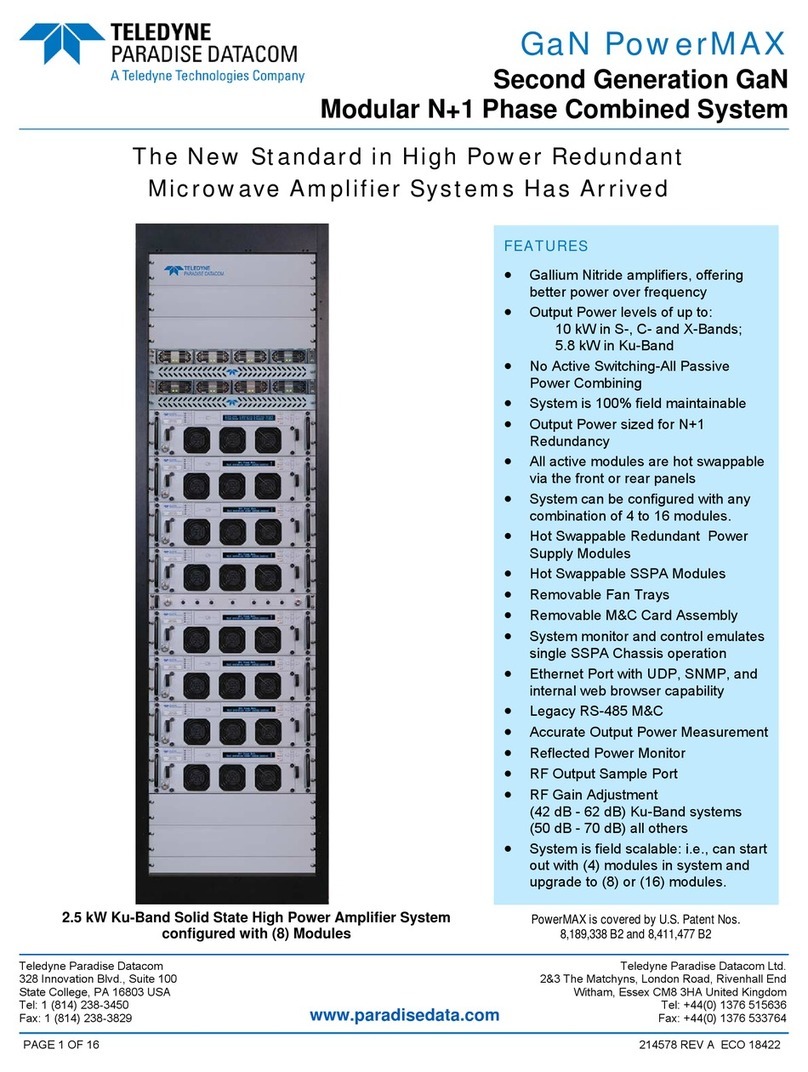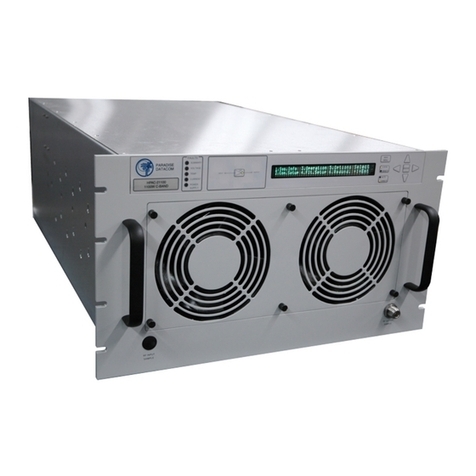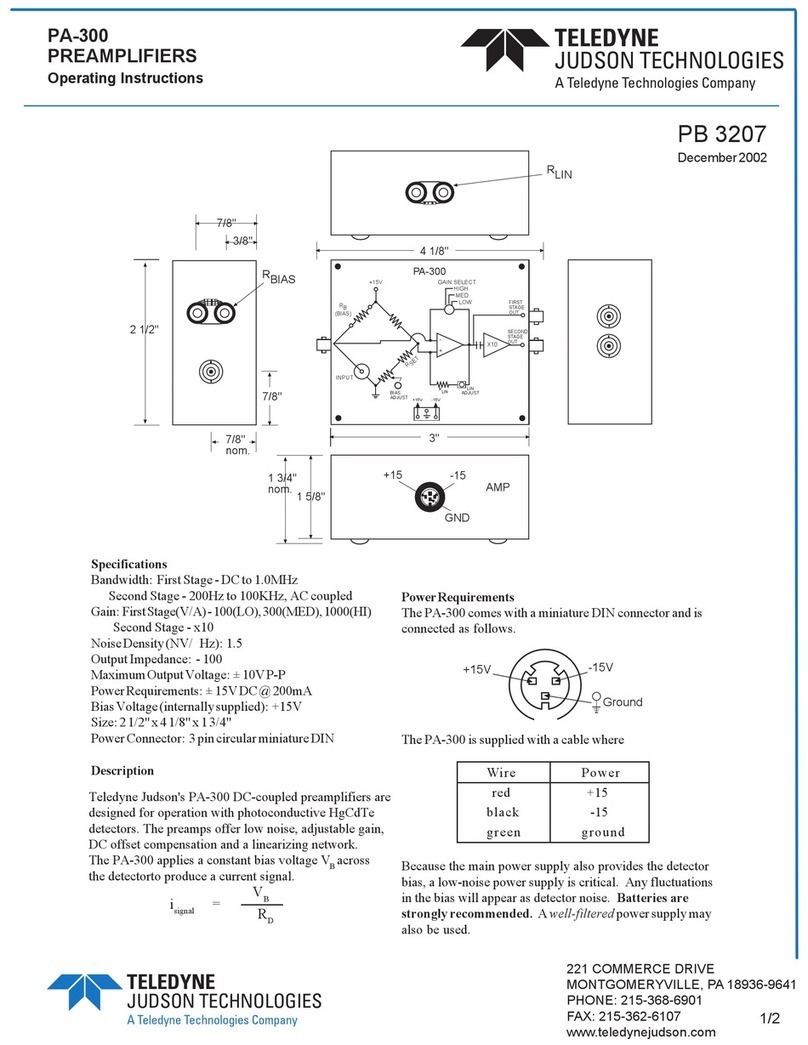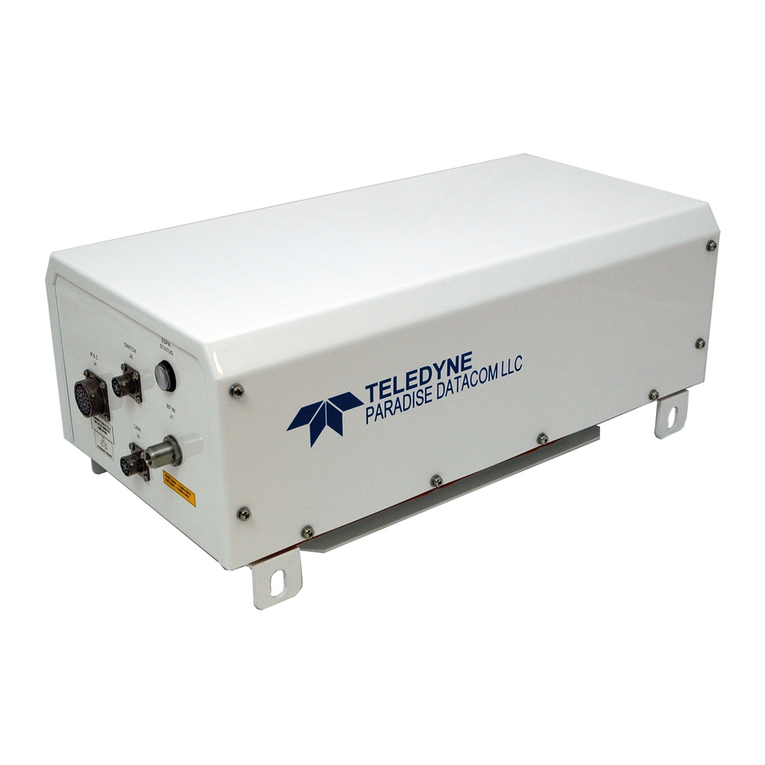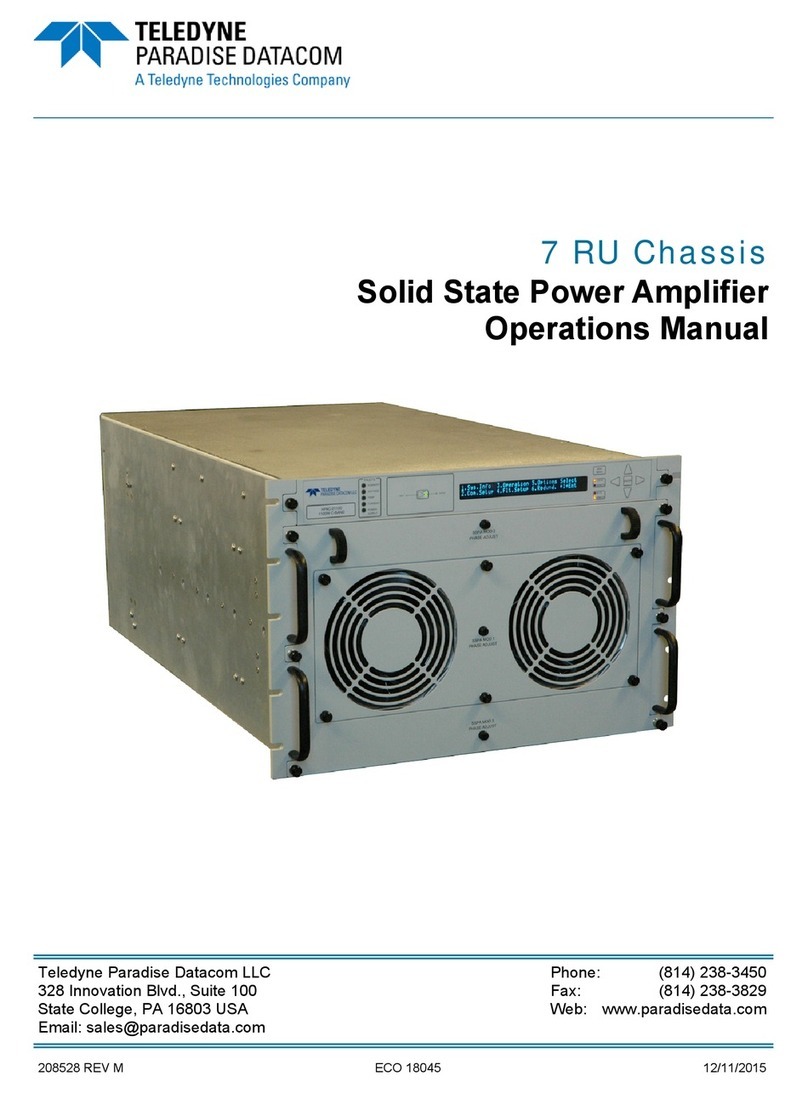
8 208495 REV F Operations Manual, HPA2, Compact Outdoor SSPA
Figure 8-5: 1:1 Redundant System with Link Cable and Switch Cable installed.................. 74
Figure 8-6: 1:1 System with RS-232 Communication to each Amplifier............................... 75
Figure 8-7: M&C Program “SSPA Settings” window ............................................................ 76
Figure 8-8: Adding a SSPA Monitor and Control Window.................................................... 78
Figure 8-9: Add New Compact Outdoor SSPA window ....................................................... 79
Figure 8-10: Individual SSPA Operation Window ................................................................ 79
Figure 8-11: Universal M&C, Add Unit Menu Tree............................................................... 80
Figure 8-12: Universal M&C, Add 1:1 Redundant System Window ..................................... 80
Figure 8-13: Universal M&C, showing a configured 1:1 Redundant System ....................... 81
Figure 8-14: Dialog window, Affirm mute of on-line amplifier............................................... 81
Figure 8-15: Control Panel showing Unit 1 faulted and signal routed to Unit 2.................... 82
Figure 8-16: Unit 1 Status panel showing Summary and Temperature Faults..................... 82
Figure 8-17: 1:1 Redundant System with RS-485 Full Duplex Communication................... 83
Figure 8-18: 1:1 Redundant System with RS-485 Half Duplex Communication .................. 84
Figure 8-19: 1:2 Redundant System .................................................................................... 85
Figure 8-20: 1:2 Redundant System Block Diagram............................................................ 85
Figure 8-21: Outline, 1:2 Redundant System....................................................................... 86
Figure 8-22: Schematic, 1:2 Redundant System ................................................................. 87
Figure 8-23: 1:2 System with L Band Input and Internally Referenced BUCs...................... 88
Figure 8-24: 1:2 System, External Reference, no reference to stand-by BUC..................... 89
Figure 8-25: 1:2 System with (3) 10MHz inputs through the input switches ........................ 90
Figure 8-26: 1:2 System, External Reference Combiner Assembly ..................................... 91
Figure 9-1: Phase Combined Amplifier System ................................................................... 93
Figure 9-2: 1:1 Fixed Phase Combined System with FPRC-1100 controller ....................... 94
Figure 9-3: Outline, 1:1 Fixed Phase Combined System ..................................................... 96
Figure 9-4: FPRC-1100 Phase Combined System Controller.............................................. 97
Figure 9-5: 1:1 Phase Combined System with HPA control of BUC redundancy................. 98
Figure 9-6: Connect to coupler ............................................................................................ 99
Figure 9-7: Outline, 1:1 Fixed Phase Combined System with L-Band Input ...................... 100
Figure 9-8: Phase adjuster ................................................................................................ 101
Figure 9-9: Block Diagram, 1:2 Fixed Phase Combined System ....................................... 101
Figure 9-10: Outline, 1:2 Fixed Phase Combined System, C-Band ................................... 103
Figure 9-11: FPRC-1200 1:2 Phase Combined Redundant Controller .............................. 104
Figure 9-12: HPA #1 & HPA #3 on line with HPA #2 on standby....................................... 104
Figure 9-13: Connect to coupler ........................................................................................ 105
Figure 10-1: Compact Outdoor remote control interface stack .......................................... 107
Figure 10-2: Basic Communication Packet........................................................................ 110
Figure 10-3: Header Sub-Packet ....................................................................................... 110
Figure 10-4: Data Sub-Packet ........................................................................................... 111
Figure 10-5: Trailer Sub-Packet......................................................................................... 114
Figure 10-6: UDP Redirect Frame Example ...................................................................... 125
Figure 10-7: Universal M&C, IP Setup tab......................................................................... 137
Figure 10-8: Universal M&C, Settings tab.......................................................................... 137
Figure 10-9: GetIF Application Parameters Tab ................................................................ 138
Figure 10-10: Getif MBrowser window, with update data in output data box ..................... 138
Figure 11-1: Universal Handheld Controller (RCH-1000) .................................................. 141
Figure 11-2: Quick Start Cable (L212638-2) for Compact Outdoor SSPAs ....................... 141
Figure A-1: Ethernet Quick Start Cable ............................................................................. 143
Figure A-2: RS-232 Quick Start Cable, 207998 ................................................................. 144




